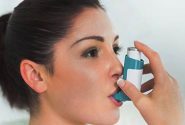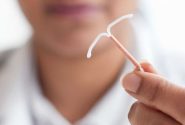(HealthDay News) — (Tasrir) — But a new study finds these drills help children who’ve been exposed to violence, helping them feel safer at school.
The findings contradict claims that drills traumatize children rather than making them feel secure, researchers said.
“Participating in drills may be a way to help students who have been exposed to violence feel safer in schools,” said researcher Jaclyn Schildkraut, executive director of the Regional Gun Violence Research Consortium at the Rockefeller Institute of Government in the U.S.
Lockdown drills, now carried out at almost all public schools, involve locking classroom doors, turning off the lights, staying out of sight and remaining quiet.
The drills were introduced following the Columbine High School massacre in 1999, in which two teens shot dead 12 classmates and a teacher and wounded 24 others.
For this study, students in fifth grade and above at a large urban school district in New York State responded to a survey about how safe they felt at school and how prepared they were for lockdowns and other emergencies.
The students were also asked about their exposure to violence, such as seeing or hearing that someone brought a gun or knife to school or being involved in or observing physical fights or bullying.
The students participated in a lockdown drill, then filled out the survey again. Several months later, they were given training on how to respond to emergencies, then had another lockdown drill and another round of surveys.
More than 8,600 surveys were completed by students with an average age of 14. On average, the students been exposed to about two types of violence, most commonly witnessing fights or bullying.
Those exposed to violence felt less safe at school, and the more types of violence they’d seen, the less safe they felt.
But taking part in the drills and training appeared to mitigate at least some of the harmful effects from their exposure to violence.
“This finding provides policymakers with direct empirical evidence against calls for lockdown and other safety drills to be abandoned on the basis that they traumatize children without making them feel safer,” Shildkraut said.
A sense of safety is essential for a student to do well in school, Shildkraut said.
“It is important for students to perceive their schools to be safe because it can impact how they function as students generally,” Shildkraut said. “For instance, not feeling safe at school can lead to anxiety, depression, lowered academic performance and missing school.”
The students as a whole felt more prepared for emergencies after taking part in the second lockdown drill, compared to the start of the study.
The findings were published Feb. 23 in the Journal of School Violence.
“The main purpose of emergency preparedness drills, including lockdowns, is for individuals to build muscle memory, which enables them to respond correctly in stressful situations without conscious effort,” Shildkraut said. “And so, it is possible that the confidence gained from taking part in lockdown drills may help to offset the negative effects of exposure to violence over time.”
Shildkraut said more research is needed to determine if these findings apply to children in more rural areas, and whether the results apply to other types of lockdown drills.
“When lockdown drills are conducted correctly they can offer unintended benefits, such as offsetting harmful effects of exposure to violence, in addition to helping to prepare students for emergencies,” Shildkraut said in a journal news release.

